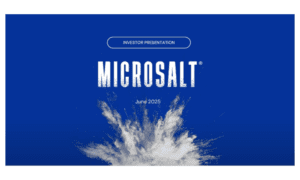Plant-based diets can still contain unhealthy levels of sodium. Here’s what you need to know.
Key takeaways:
- Plant-based diets can still have the same high levels of sodium as regular American diets
- Tips for reducing sodium in plant-based diets:
- Use herbs and spices
- Avoid processed and packaged foods
- Choose fresh produce and whole grains
- Cook at home and read labels
- Monitor condiment and seasoning usage
Americans are learning more and more about the risks of consuming too much sodium. Most of our diets contain an overload of salt from fast food, restaurant meals, and processed foods, which leads to higher rates of heart disease, high blood pressure, and other health issues.
At the same time, plant-based diets are becoming more of a norm in the U.S. These diets prioritize foods like fruits, vegetables, nuts, oils, grains, and beans. Plant-forward diets aren’t necessarily completely vegetarian or vegan, though they can be. But many people are simply opting to eat more plant-based foods for an overall healthier diet.
But “plant-based” doesn’t necessarily mean “low-sodium.” Many plant-based foods are still unhealthy. Think about French fries, which are technically a plant-based food, but definitely not good for you. And many meat substitutes are just as high in sodium as the real thing.
The secret to low-sodium, plant-based eating lies in how your foods are processed and/or prepared. This guide will help you identify where sodium lurks in plant-based diets, how to avoid it, and which plant-based food substitutes to incorporate into your meals.
Sodium and plant-based diets
We all need a certain amount of sodium for our bodies to function properly. You may think sodium is only present in unhealthy foods, or added with table salt, but fruits and vegetables also naturally contain sodium.
That said, meat isn’t the only culprit that leads to America’s high sodium problem – many plant-based products also contain unhealthy amounts of salt. In fact, one study found that 96 of 151 plant-based restaurant meals had at least half of the recommended daily amount of salt.
In many plant-based processed foods, salt is added for flavor or used as a preservative. Even packaged vegetables can have unhealthy levels of added sodium. In addition, many meat substitutes are unfortunately not as healthy as you may think when you decide to eat vegetarian.
So even if you’ve switched to a plant-based diet for better health, you still have to be cautious about what you’re eating. Otherwise, you could still be at risk for sodium-linked ailments including heart disease, stroke, high blood pressure, and diabetes.
Tips for reducing sodium in your plant-based diet
The good news is that you can take advantage of all the benefits of a plant-based diet by making the right food choices. Here are some tips to help improve your diet:
1. Use herbs and spices to add flavor
Whenever you need a little extra flavor, think twice before reaching for the saltshaker. You can spice up your food by using herbs and spices, like oregano, rosemary, paprika, pepper, and garlic. The taste may be just as good as adding too much salt, if not better. Doing this helps you reduce your salt intake.
2. Avoid processed and packaged foods
Processed foods contribute significantly to America’s sodium problems. Manufacturers want products to have a long shelf-life, so they add salt both for flavor and to keep things fresh for a long time. If you do buy packaged or canned foods, try to find products with reduced sodium or no salt added.
3. Choose fresh produce and whole grains
Your best bet when visiting the grocery store is to buy fresh produce. You can also find frozen vegetables and some canned foods with no salt added. But buying fresh fruit and vegetables ensures that you’re only going to be consuming the sodium that is naturally present.
4. Cook at home and read labels
As much as possible, cook your meals at home. Avoid eating out at restaurants, where most of our sodium intake comes from. Also, make sure to read the labels and nutrition facts of food products you buy at the grocery store. Compare how much salt is in one product versus another product. You can likely find your favorite snacks with a significant sodium reduction.
5. Monitor condiment and seasoning usage
Pre-mixed seasonings that contain salt are another high-sodium culprit. These seasonings taste great but probably contain much more salt than you need. Condiments can also be high in sodium, especially ketchup and soy sauce. Don’t use too much when you do add condiments or seasonings to your food at home. Or try a lower-sodium alternative.
Plant-based substitutes for high-sodium foods
Many unhealthy snacks are made from plants, and they’re usually unhealthy due to salt being added during processing. Potato chips and French fries are prime examples.
The good news is that you can find many plant-based, healthy alternatives to your favorite snacks. Look for products with no or reduced sodium. Or switch to eating an apple or carrot sticks when you have a snack attack. Try to buy nuts that don’t have any salt added.
There are also great plant-based alternatives to high-sodium condiments that you should reach for instead of your standard ketchup. Look for salt-free options or use tasty garnishes and add-ons like cilantro, parsley, or avocado.
Many plant-based proteins have a lot less sodium than meat. Just make sure that any processed substitutes you buy don’t have a lot of added salt. (Unflavored options may be your best bet.) Using vegetables like mushrooms or zucchini in dishes can also help you replace meat with something hearty and healthy.
Improve your plant-based diet by monitoring sodium intake
Moving to a plant-based diet is a great step toward better health. Just remember that not all plant-based foods are healthy. You still need to monitor how much sodium is in the foods you eat, including what’s been added. Stay away from processed foods as much as possible and try to cook at home as often as you can.
Also take advantage of the groundbreaking sodium-reduction technology developed by MicroSalt®, which creates micro-sized particles of salt that are 100 times smaller than typical salt crystals, but taste twice as salty. With our SaltMe®! Chips, you don’t have to worry about any substitutes, and there’s nothing lacking in taste. Contact MicroSalt® today to find out more.




